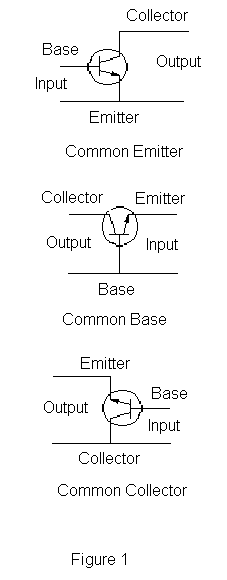Introduction to Amplifier Rise
Tuesday, August 13, 2013
0
comments
Amplification is the method of increasing the amplitude of a AC signal current or voltage such as audio signal for sound or video signal for a television picture. The amplifier allows a small input signal to control a bigger amount of power in the output circuit. The output signal is a replica of the original input signal but has higher amplitude.
Amplification is necessary as in most applications, the signal is weak to be used directly. For example, an audio output of 1mV from a microphone is unable to drive a loud speaker which requires a few volts to operate. Hence, the signal require to be amplified to a few volts before it can be fed in to the loud speaker.
NP N Transistor Circuit Configurations
An example of different type of transistor configurations in the circuit is as shown in Figure one below.

(1) The common emitter(CE) circuit makes use of emitter as its common electrode. The input signal is applied to the base and the amplified output is taken from the collector. This is the usually use because its the best combination of current gain & voltage gain.
(2) The common base (CB) circuit makes use of base as its common electrode. The input signal is applied to the emitter & the amplified output is taken from the collector. The comparatively high emitter current compared to the base current ends in low input impedance value. For this reason, the CB circuit is never used.
(3) The common collector (CC) circuit makes use of collector as its common electrode. The input signal is applied to the base & the amplified output is taken from the emitter. This circuit is also called an emitter follower. This name means that the output signal voltage at the emitter follows the input signal at the base with the same phase but less amplitude. The voltage gain is less than one & is usually used for impedance matching. Its high input at the base as a load for the earlier circuit & low output impedance at the emitter as a signal source for the next circuit.
Classes
They can be classified in to classes A, B, C & AB. They are defined based on the percent of the cycle of input signal that can produce output current.
In Class A, the output current flows for the full cycle of 360 degree of input signal. The distortion is the lowest with around 5% to 10% &an efficiency of 20% to 40%. In general, most tiny signal operate class A
In Class C, the output current flows for less than half of the input cycle. Typical operation is 120 degree of input current in the coursework of the positive half cycle of the input current. This class has an efficiency of 80% but has the highest distortion. This class is usually used for RF amplification with a tuned circuit in the output.
In Class B, the output current flows for half of the input cycle which is around 180 degree. Class B operation lies between class A & class C. Classes B are usually connected in pairs & in such a circuit called push-pull amplifier. The push pull is often used for audio power output to a loud speaker.
In Class AB, it offers a compromise between the low distortion of class A & the higher power of class B. It is usually used for push pull audio power amplifiers.









